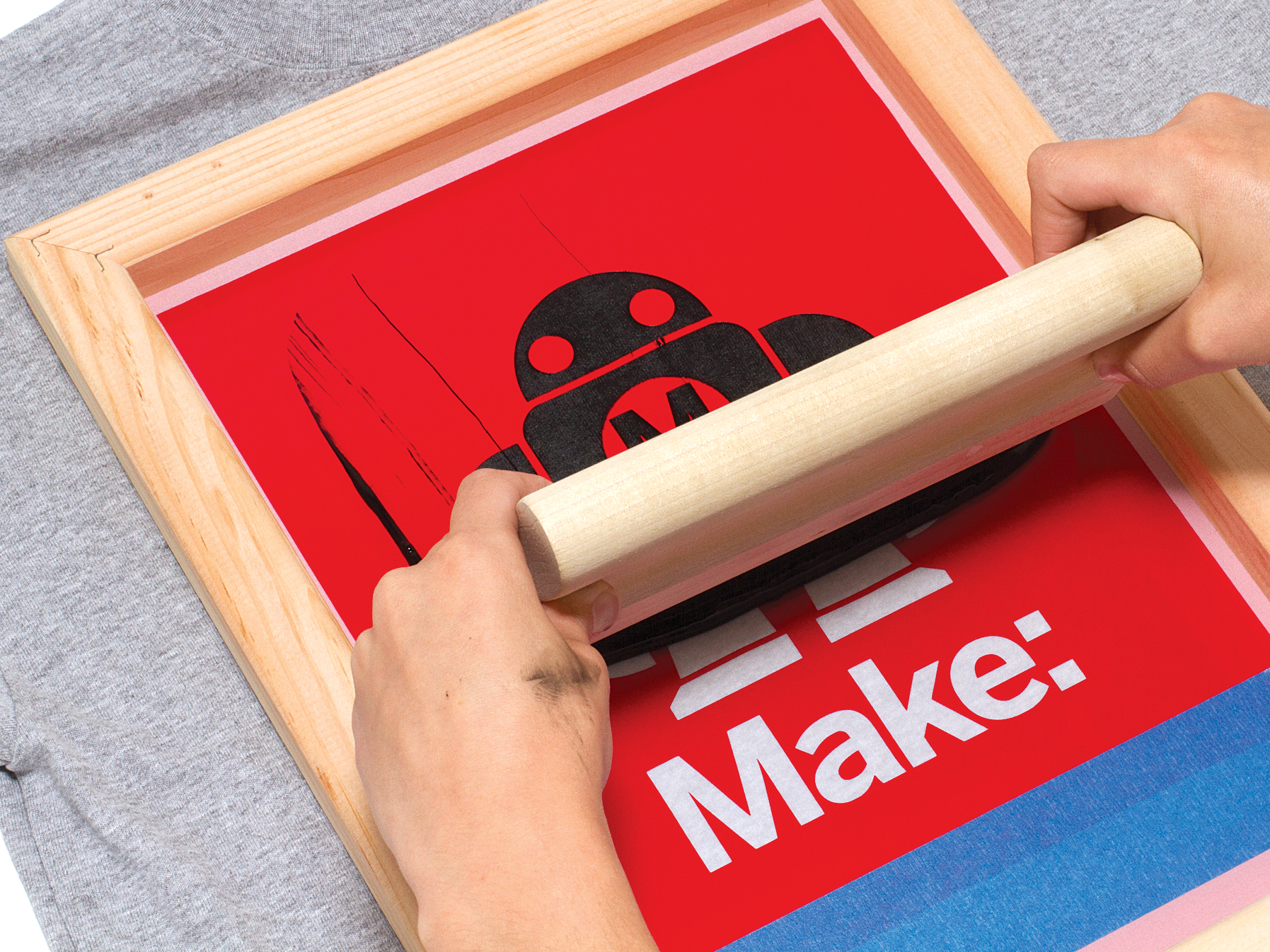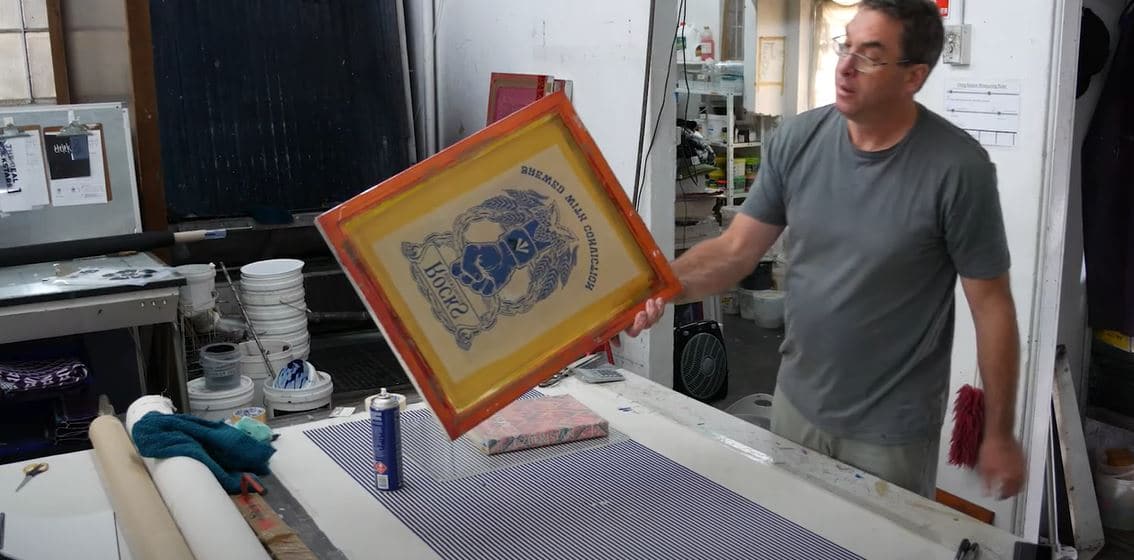ChatGPT said: Easy process to ordering with 10:9 Design Abilene
Wiki Article
Discover the Different Kinds of Screen Printing Techniques for Your Following Job
Screen printing provides a varied variety of methods that can enhance any type of imaginative job. From standard approaches like serigraphy to modern innovations such as direct-to-garment printing, each strategy has its unique advantages. Specialized choices, consisting of metal and environmentally friendly inks, introduce even extra possibilities. Recognizing these techniques can significantly impact the last end result. However, the obstacle exists in selecting one of the most ideal technique for details needs and wanted effects. What variables should one think about?
The Fundamentals of Screen Printing
Although screen printing might appear complicated, it is fundamentally a simple procedure that includes transferring ink through a mesh screen onto various surfaces. The method starts with the development of a stencil, which specifies the design to be printed. This pattern is affixed to a mesh screen, usually constructed from polyester or nylon. As soon as the stencil remains in place, ink is related to the screen and pressed through the mesh using a squeegee, causing the desired pattern being published on the underlying product.Screen printing can be done on a broad variety of substratums, consisting of plastic, paper, and material, making it a functional choice for numerous projects. The procedure enables vibrant shades and elaborate layouts, making it preferred in industries such as advertising and marketing, fashion, and art. Comprehending these basics gears up people with the fundamental understanding needed to check out even more innovative methods in screen printing.
Standard Screen Printing Techniques
Conventional screen printing methods have actually been used for centuries, preserving the workmanship and creativity of this approach. This method makes use of a mesh screen to transfer ink onto a substratum, such as textile or paper, enabling for resilient and vibrant styles. The process starts with developing a pattern, which blocks certain locations of the screen to regulate where the ink will certainly be used.One prominent strategy is serigraphy, often used for creative prints and minimal versions. An additional is the use of water-based inks, which are green and provide a soft feel on textiles - 10:9 Design contact. Additionally, typical approaches can consist of hand-operated printing, where artisans apply ink with a squeegee, guaranteeing accuracy and attention to detail
These strategies remain valued in the market for their responsive high quality and the one-of-a-kind appearances they create, appealing to both customers and developers that appreciate the heritage of screen printing.
Digital Screen Printing Innovations
As the need for faster manufacturing and customization in the printing sector has risen, electronic screen printing technologies have actually arised as a game-changer. This modern technology mixes conventional screen printing approaches with digital procedures, enabling for quick prototyping and complex layouts that were formerly difficult to accomplish. One significant advancement is the intro of direct-to-garment (DTG) printing, which assists in high-grade, full-color prints on different textiles without the need for displays. Additionally, advancements in ink solutions have brought about environment-friendly choices that keep lively colors while minimizing ecological influence. The use of automated systems better enhances production, decreasing labor prices and enhancing precision. These developments not only accommodate tiny batch orders and personalized designs but also permit quicker turn-around times, making them optimal for services concentrated on meeting customer needs in a busy market. Digital screen printing, subsequently, represents a vital development in the domain name of printing strategies.Specialty Screen Printing Approaches
Exploring specialty screen printing methods exposes a diverse variety of techniques that press the boundaries of imagination and functionality in the printing market. Among these, glow-in-the-dark inks offer an unique aesthetic result, making designs come to life in low-light conditions. Metallic inks, recognized for their shimmering coating, include a touch of luxury to published materials. One more innovative approach is discharge printing, which eliminates dye from the fabric as opposed to adding ink, leading to a soft, vintage feel. High-density printing click to find out more creates an elevated structure on the surface area, improving responsive engagement. Additionally, water-based inks are obtaining appeal for their dynamic colors and lowered ecological impact. Each of these specialty techniques provides to specific design demands, allowing brands and artists to produce standout products that reverberate with their audiences. By leveraging these techniques, companies can boost their screen printing tasks to brand-new elevations, ensuring memorable impacts.Eco-Friendly Screen Printing Options
Environmentally friendly screen printing alternatives are obtaining traction as the industry moves in the direction of sustainability. Lasting ink choices and making use of eco-friendly products are essential parts in lowering the ecological effect of the printing procedure. By embracing these practices, screen printers can add to an extra lasting future while preserving high-grade outcomes.Lasting Ink Selections

Biodegradable Materials Usage
As the screen printing industry develops, the unification of naturally degradable products is ending up being significantly essential for eco conscious techniques. Makers and designers are now checking out inks and substrates made from all-natural, sustainable sources that break down a lot more successfully than traditional equivalents. These naturally degradable options minimize plastic waste and decrease ecological impact, lining up with the growing demand for lasting items.
Usual instances include water-based inks and organic cotton materials, both of which lessen damaging chemicals and promote eco-friendliness. Brand names that adopt these products often enhance their market allure, bring in consumers that prioritize sustainability. As awareness of environmental issues remains to increase, the shift towards naturally degradable materials in screen printing is most likely to gain energy, promoting a greener sector criterion.
Selecting the Right Method for Your Job
Just how can one establish one of the most suitable screen printing technique for a specific project? The choice pivots on a number of factors, including the product to be printed on, the complexity of the design, and the wanted view it manufacturing quantity - 10:9 Design near me. For example, direct-to-garment printing is suitable for intricate layouts with countless colors, while website link traditional screen printing succeeds for larger runs of simpler graphics
In addition, consideration of the end-use of the published product is important. For exterior applications, methods that supply durability and weather condition resistance, such as plastisol ink, might be chosen. On the other hand, environmentally-conscious tasks might gain from eco-friendly products or water-based inks.
Ultimately, understanding the project's unique requirements permits an enlightened option, making sure both aesthetic charm and functional long life. By evaluating design complexity, material compatibility, and manufacturing range, one can properly pick the most ideal screen printing strategy to fulfill their task's goals.
Frequently Asked Inquiries
What Is the Background of Screen Printing?
Screen printing stemmed in ancient China around 1000 AD, progressing through Japan and Europe. By the 20th century, it ended up being popular in business art and style, transforming just how styles were produced and distributed around the world.
Exactly how Do I Prepare Art Work for Screen Printing?
To prepare artwork for screen printing, one should ensure high resolution, make use of an ideal shade setting, create separate layers for each shade, and transform message to outlines, ensuring compatibility with the printing process and preferred result.What Materials Are Best for Screen Printing?
The most effective products for screen printing consist of top quality inks, resilient screens, and ideal substratums like cotton, polyester, or blends. Furthermore, utilizing appropriate emulsion and squeegees can boost the printing procedure and last outcomes.Can I Evaluate Print in the house?
Yes, screen printing at home is possible. With the appropriate products, arrangement, and strategies, individuals can produce premium prints. Nevertheless, careful factor to consider of work area and equipment is vital for effective results.
What Prevail Blunders in Screen Printing?
Typical blunders in screen printing consist of improper direct exposure times, inadequate ink consistency, imbalance of displays, insufficient cleansing of products, and neglecting to check prints. These mistakes can compromise the top quality and precision of the end product.Screen printing might seem complicated, it is fundamentally a simple process that involves transferring ink via a mesh screen onto various surfaces. As the need for faster production and customization in the printing market has actually surged, digital screen printing innovations have actually emerged as a game-changer. Checking out specialized screen printing approaches discloses a varied selection of techniques that push the borders of creative thinking and functionality in the printing industry. The best products for screen printing consist of top notch inks, resilient displays, and appropriate substratums like cotton, polyester, or blends (10:9 Design Screen Printing Texas). Typical errors in screen printing include incorrect direct exposure times, poor ink consistency, imbalance of displays, inadequate cleaning of materials, and disregarding to check prints
Report this wiki page